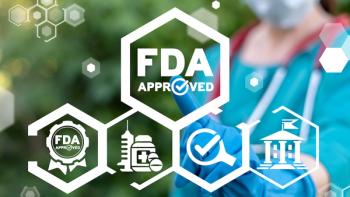
Novavax COVID-19 Vaccine Booster Gets FDA EUA
Novavax’ protein-based vaccine is engineered from the genetic sequence of the first strain of SARS-CoV-2, the virus that causes COVID-19 disease.
Novavax’s COVID-19 vaccine (NVX-CoV2373) has received emergency use authorization (EUA) from the FDA for a first booster dose at least six months after completion of primary vaccination. The EUA applies to people 18 years of age and older for whom an mRNA bivalent COVID-19 booster vaccine is not accessible or clinically appropriate, and to people 18 years of age and older who elect to receive the Novavax COVID-19 vaccine, Novavax said in a
“The U.S. now has access to the Novavax COVID-19 Vaccine, Adjuvanted, the first protein-based option, as a booster,” Stanley C. Erck, president and chief executive officer of Novavax, said in a press release. “According to CDC data, almost 50% of adults who received their primary series have yet to receive their first booster dose. Offering another vaccine choice may help increase COVID-19 booster vaccination rates for these adults.”
The vaccine comes at a time when
The FDA’s EUA decision for the Novavax booster was based on data from the phase 3 Prevent-19 clinical trial and from the UK-sponsored COV-BOOST trial. In the phase 3 trial, antibody levels increased significantly relative to pre-boost levels, rising above levels associated with protection. Neutralizing antibodies also increased by 34- to 27-fold compared with pre-boost levels when boosted at eight or 11 months, Novavax said.
In the COV-BOOST trial, the Novavax COVID-19 vaccine increased antibody titers when used as a third dose following initial dosing with another authorized COVID-19 vaccine. In the trial, the incidence of grade 3 or higher adverse events remained relatively low. Among participants 18 years of age and older, adverse reactions following the booster dose of the vaccine were injection site pain/tenderness (81.1%), fatigue/malaise (63.4%), muscle pain (63.0%), headache (52.9%), joint pain (30.3%), nausea/vomiting (14.7%), injection site swelling (8.4%), injection site redness (6.3%), and fever (6.3%).
The next step for the vaccine is a policy recommendation for use as a first booster from the CDC.
The FDA granted EUA for a two-dose primary series in adults aged 18 and older in
Newsletter
Get the latest industry news, event updates, and more from Managed healthcare Executive.





















































